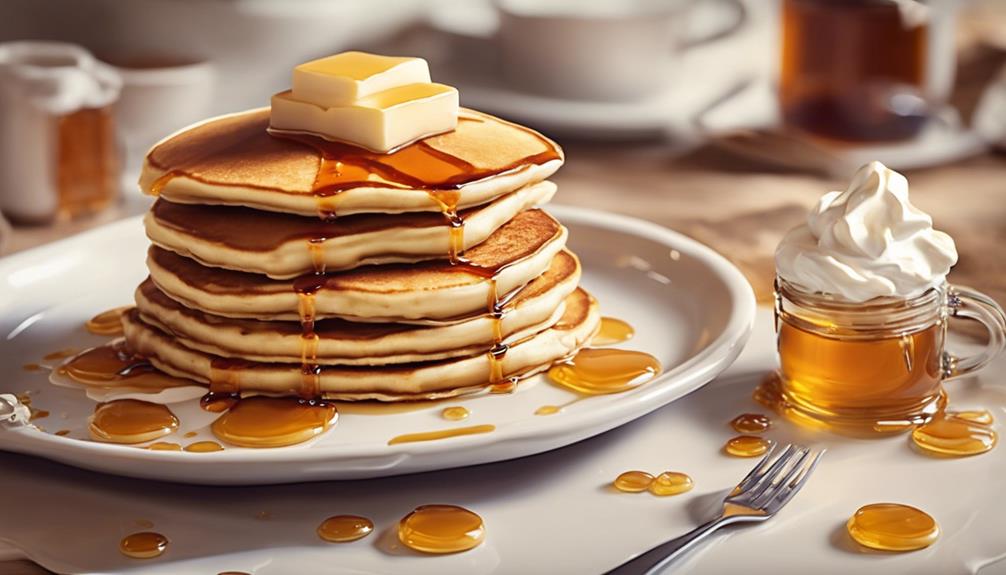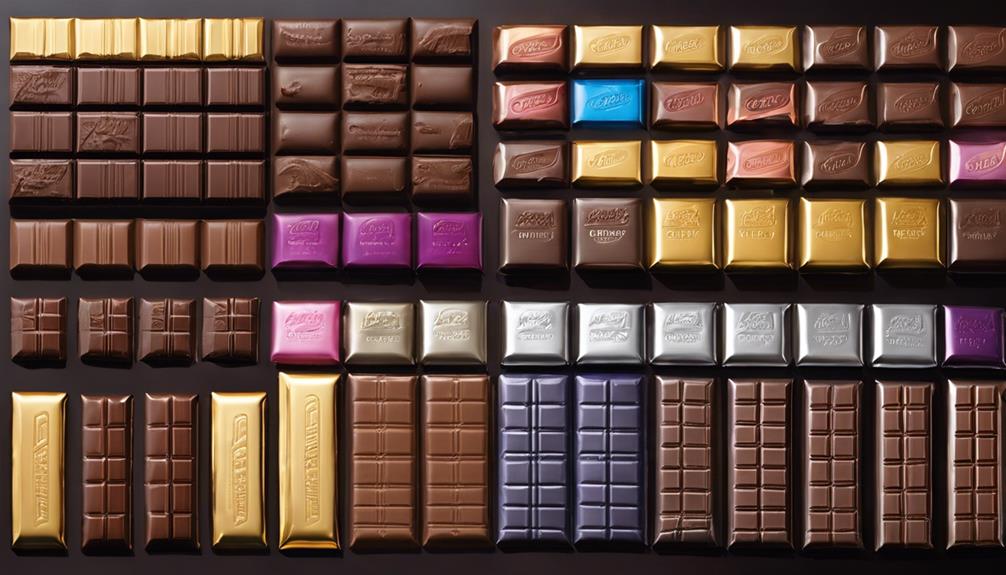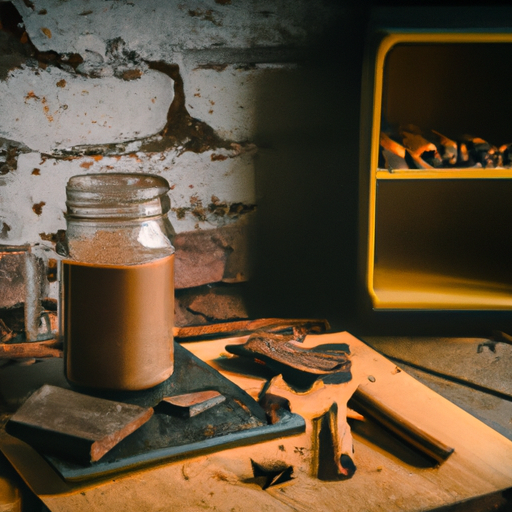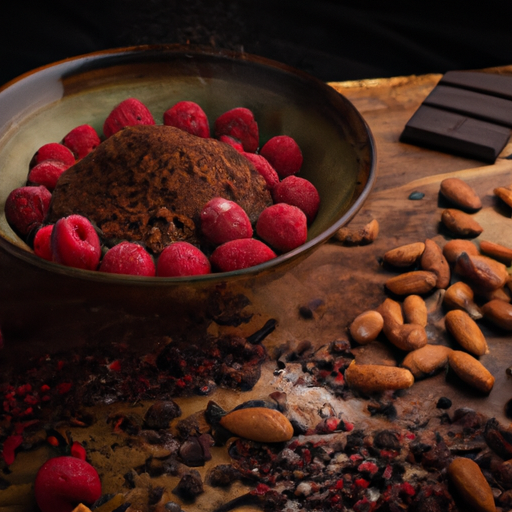When comparing flapjacks, pancakes, and hotcakes, it’s evident that each offers distinct textures, flavors, and influences from different regions. Flapjacks, which date back to the late 1500s, use oats and brown sugar for a chewy sweetness, while pancakes, a global favorite for centuries, consist of flour, eggs, milk, and butter for a fluffy versatility. Hotcakes, thick and heavy with various flavors like chocolate or syrup, cater to different preferences. Understanding these breakfast treats’ unique ingredients, textures, and cooking methods will unveil a world of culinary diversity and delicious possibilities.

Key Takeaways
- Flapjacks use oats and brown sugar for a chewy, sweet taste.
- Pancakes have a fluffy texture with flour, eggs, milk, and butter.
- Hotcakes are thick and heavy, offering a substantial bite.
- Each type caters to different preferences in texture and consistency.
- Unique regional variations influence ingredients, flavors, and cooking methods.
Origins and History
The history of flapjacks, pancakes, and hotcakes reveals intriguing cultural and regional culinary distinctions. Flapjacks, often called griddle cakes, have a long and rich history, with the term originating in the late 1500s to describe a type of pancake. In the UK, flapjacks are distinct from traditional pancakes, as they’re made from rolled oats, butter, and golden syrup, offering a heartier texture and flavor profile.
On the other hand, pancakes have been a staple in global culinary traditions for centuries, known by various regional names and prepared using diverse ingredients.
The versatility of griddle cakes, flapjacks, or pancakes is evident in their adaptability to different cultural preferences and regional availability of ingredients. Whether you prefer the oat-based flapjacks of the UK or the classic pancake variations found worldwide, these beloved treats continue to bring joy to breakfast tables across the globe.
Ingredients and Flavor Profiles
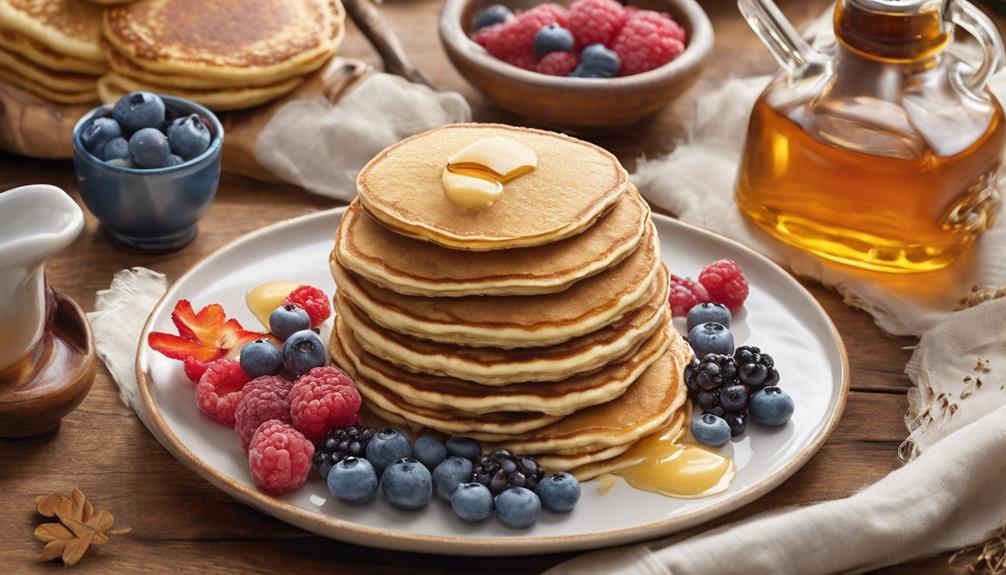
When making flapjacks, the key ingredients like rolled oats and brown sugar give them a chewy and sweet taste.
Pancakes, on the other hand, use a batter of flour, eggs, milk, and butter for a fluffy and versatile flavor.
Hotcakes may vary in texture and can be flavored with chocolate or syrup for a richer taste experience.
Ingredients Breakdown
Comparing the ingredients breakdown of flapjacks, pancakes, and hotcakes reveals distinct textures and flavors unique to each variation. Flapjacks in the UK are crafted from oats and brown sugar, resulting in a chewy and hearty texture that sets them apart.
On the other hand, pancakes typically comprise flour, eggs, milk, and butter, yielding a light and fluffy consistency that many enjoy.
Hotcakes, known for being denser and thicker than traditional pancakes, offer a more substantial bite due to their specific ingredients.
The flavor profiles of flapjacks, pancakes, and hotcakes vary based on regional recipes and the distinct ingredients used in each. Each variant, whether flapjacks, pancakes, or hotcakes, provides a unique taste experience shaped by the precise ingredients employed.
Flavor Contrasts
In exploring the flavor contrasts of flapjacks, pancakes, and hotcakes, one immediately notices the distinctive ingredients that shape their unique taste profiles.
When it comes to pancakes, the classic combination of flour, eggs, milk, and butter creates a light and fluffy texture with a neutral taste.
On the other hand, flapjacks stand out with their hearty and slightly sweet flavor, thanks to ingredients like rolled oats and brown sugar.
Hotcakes offer a denser texture and richer flavor compared to traditional pancakes, making them a favorite among those who prefer a pivotal breakfast option.
The use of different ingredients like oats, spices, or sweeteners plays an essential role in creating these delicious flavor variations on the griddle.
Texture and Consistency
As a pancake enthusiast, I appreciate the distinct variations in texture and consistency among flapjacks, pancakes, and hotcakes. When it comes to pancakes, they are typically made with a batter that is cooked on one side, resulting in a soft and fluffy texture that melts in your mouth. On the other hand, flapjacks offer a denser and chewier experience, thanks to ingredients like oats that give them a hearty and robust consistency. Hotcakes, known for being thicker and heavier than the other two, provide a more substantial bite that some may prefer for a more filling meal.
To help you visualize the differences better, here’s a comparison table:
| Texture | Consistency | |
|---|---|---|
| Pancakes | Soft and fluffy | Light |
| Flapjacks | Dense and chewy | Hearty and robust |
| Hotcakes | Thick and heavy | Substantial |
Each type offers a unique texture and consistency, catering to various preferences among pancake lovers.
Cooking Methods and Techniques
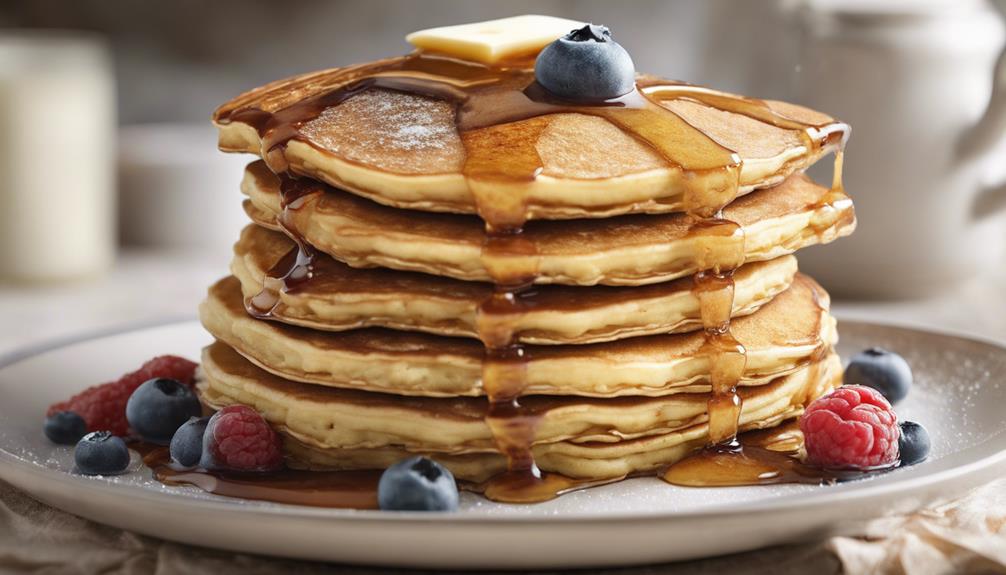
One can observe unique regional variations that influence the preparation process when exploring the cooking methods and techniques for flapjacks, pancakes, hotcakes, and griddlecakes.
- Batter: The batter for these delightful treats is a key component. It’s typically made from a mixture of flour, eggs, milk, and butter. This batter is then poured onto a hot griddle or flat surface to cook.
- Griddle: The cooking surface plays an essential role in achieving the perfect flapjack, pancake, hotcake, or griddlecake. Whether it’s a traditional griddle, frying pan, or flat surface, the heat must be evenly distributed to ensure uniform cooking.
- Syrup: Once these delicious creations are cooked to golden perfection, they’re often served with a generous drizzle of syrup. Whether it’s maple syrup, honey, or fruit compote, the choice of syrup adds a delightful sweetness to the dish.
Mastering the art of cooking these breakfast delights involves understanding the batter consistency, managing the griddle’s heat, and choosing the perfect syrup for that finishing touch.
Regional Variations and Traditions
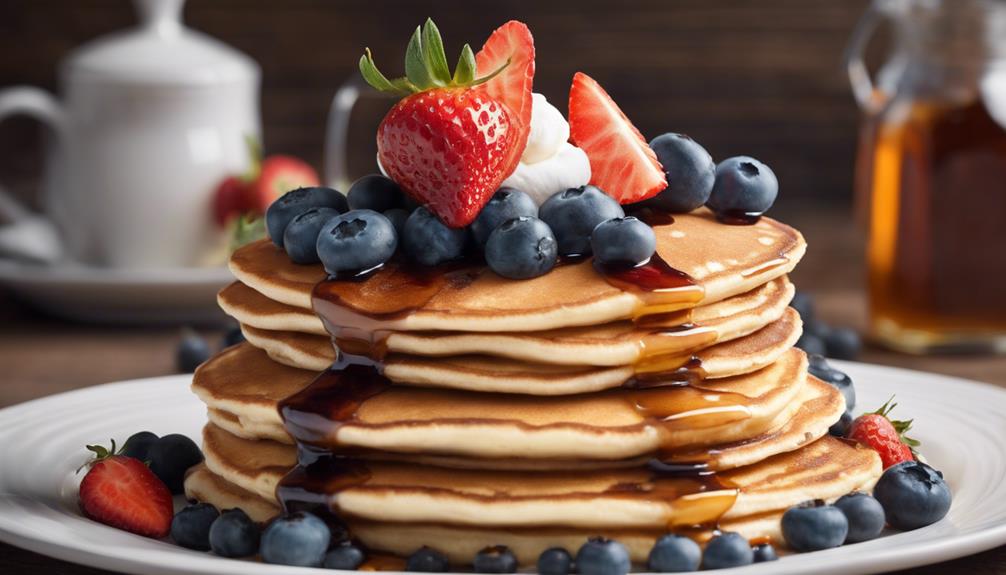
When it comes to pancakes, each region has its own unique twist on this beloved breakfast food. African pancakes like injera, canjeero, and lahoh showcase the diverse pancake variations across the continent.
From South African pannekoek with cinnamon sugar to Chinese pancakes served with duck, regional traditions and flavors add a rich tapestry to the world of pancakes.
Cultural Pancake Differences
Exploring cultural pancake differences reveals a rich tapestry of flavors and traditions worldwide. African pancakes, such as injera, canjeero, and lahoh, each offer unique ingredients and flavors.
South African pannekoek is commonly served with cinnamon sugar, a traditional topping that adds sweetness to the dish. Chinese pancakes, typically made with dough, are often enjoyed with duck or as a snack.
Indian pancakes showcase regional diversity with varieties like cheela in North India and dosa in South India, highlighting different cooking methods and flavors.
Southeast Asian countries present unique pancake variations, such as Indonesian serai and Filipino salukara, reflecting diverse cultural influences in their cuisine.
Flapjack Regions Worldwide
Flapjack regions worldwide showcase a diverse array of regional variations and traditions, each offering a unique twist on this beloved oat-based treat.
In the UK, flapjacks are baked oats bars made with oats, butter, and syrup, distinct from American pancakes.
Australian flapjacks are sweet and chewy bars, combining oats, golden syrup, and butter for a delightful treat.
American flapjacks, often called pancakes, differ from UK flapjacks but share similarities with South African thin pancakes served with syrup or jam.
The term ‘flapjack’ varies in meaning across regions, encompassing a range of food items from baked oat bars to traditional pancakes. Each region puts its own spin on flapjacks, creating a delightful culinary adventure for those who savor these tasty treats.
Hotcake Traditions Around Globe
Continuing our exploration of hotcake traditions around the globe, we encounter a rich tapestry of regional variations and culinary customs that highlight the diverse ways in which these beloved pancakes are enjoyed worldwide.
In Japan, hotcakes are famous for their exceptional thickness and fluffiness, achieved by vigorously beating the batter until foamy.
Indonesian serabi offers a unique twist with its one-sided pancake, featuring distinct burn marks from clay pan cooking.
Meanwhile, Scottish drop scones stand out by incorporating cream of tartar into the batter, creating a specific flavor profile that sets them apart from traditional flapjacks.
Each region’s take on hotcakes adds a special touch to this universally loved breakfast treat.
Popular Toppings and Accompaniments
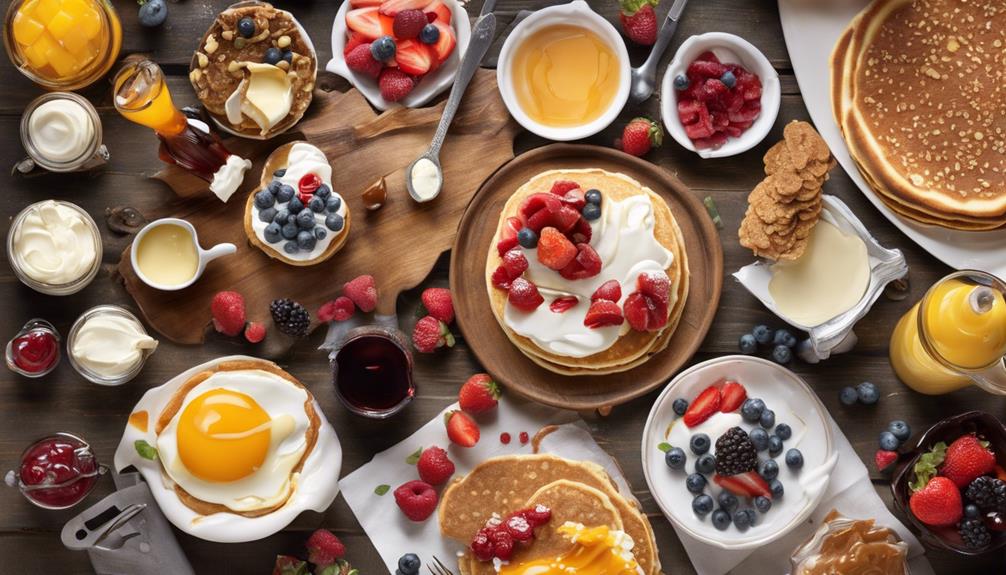
When it comes to pancakes, flapjacks, and hotcakes, a variety of popular toppings and accompaniments can enhance the flavors and experience of these griddle cakes. Maple syrup is a classic choice, drizzled generously over the warm stack, while melting butter adds a rich and creamy touch. Fresh fruits like strawberries, blueberries, or bananas can bring a burst of sweetness and a pop of color to your breakfast. For those with a sweet tooth, chocolate chips sprinkled on top create a decadent treat that’s hard to resist.
To complement these griddle cakes, consider serving them with crispy bacon, savory sausage, eggs cooked to your liking, or golden hash browns for a hearty and satisfying meal. If you’re in the mood for something different, try adding savory toppings like cheese, ham, or vegetables for a unique twist. For a touch of indulgence, experiment with accompaniments such as peanut butter, Nutella, yogurt, or nuts to elevate the flavors and textures.
And for those seeking a sweet and luxurious option, specialty toppings like lemon curd, honey, jam, or caramel sauce offer a delightful finishing touch to your pancakes, flapjacks, or hotcakes.
Frequently Asked Questions
What Is the Difference Between Hotcakes Pancakes and Flapjacks?
I’ll explain the difference between hotcakes, pancakes, and flapjacks. Each term generally refers to a similar griddled treat, but slight variations exist in thickness and regional usage. Let’s explore these distinctions together.
Why Do Americans Call Pancakes Flapjacks?
I call pancakes flapjacks because of historical usage and cultural influences. It’s a fun, informal term that adds a cozy vibe to breakfast. Plus, it’s a nod to tradition and a way to make the morning meal feel special.
What Country Calls Pancakes Flapjacks?
I’m aware that in the US and Canada, some regions informally call pancakes “flapjacks.” It’s interesting how terminology can vary across countries. It’s always fascinating to learn about these nuances in culinary customs.
Do British People Call Pancakes Hotcakes?
No, British people typically do not call pancakes hotcakes. In Britain, we commonly refer to this dish simply as pancakes. The term ‘hotcakes’ is more commonly used in American English rather than in British culinary culture.
How Do Hotcakes Differ from Flapjacks and Pancakes?
Hotcakes, also known as pancakes, are typically thinner and fluffier than flapjacks, which are a bit denser and chewier. Flapjacks are also often made with oats or other grains, while hotcakes are more commonly made with a simple batter of flour, eggs, and milk. Hotcakes explained here.
Conclusion
To sum up, flapjacks, pancakes, and hotcakes each have unique origins, ingredients, and cooking methods. Whether you prefer the fluffy texture of pancakes, the denser consistency of flapjacks, or the slightly sweet flavor of hotcakes, there's something for everyone to enjoy.
Next time you're in the mood for a delicious breakfast treat, why not try making all three and see which one becomes your new favorite?

